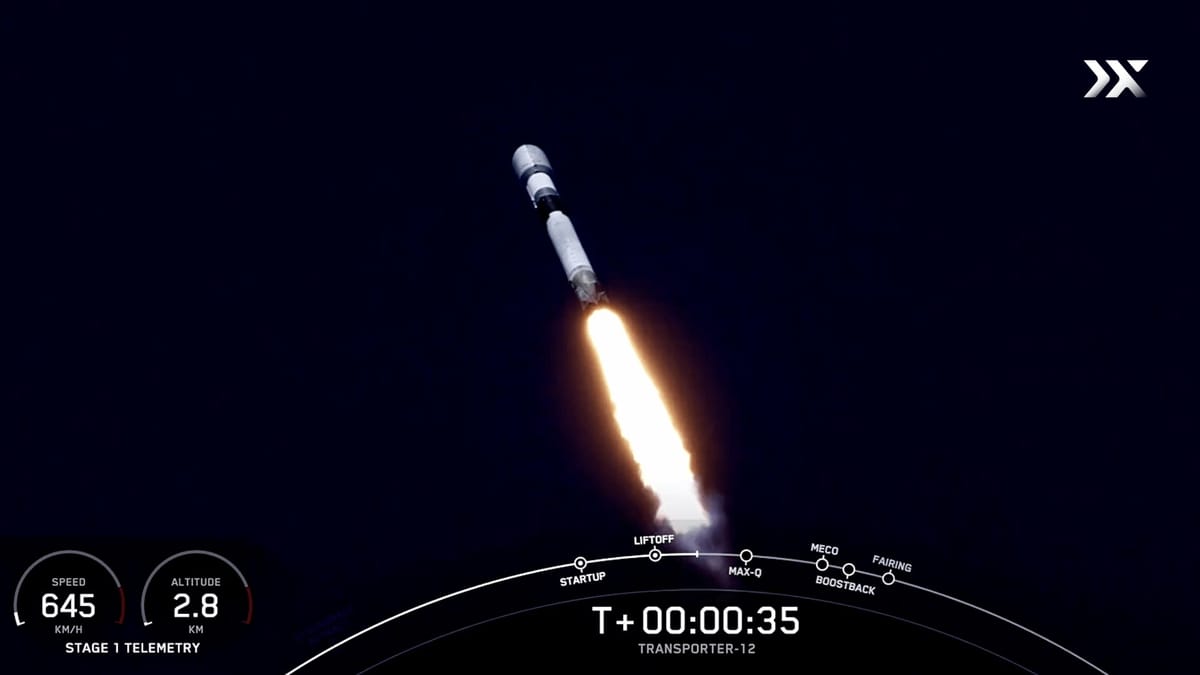
Bengaluru-based startup Pixxel announced the launch of three of the world's highest-resolution commercial hyperspectral satellites from the Vandenberg Space Force Base in California on Wednesday.
The Firefly constellation satellites were integrated via Exolaunch and launched aboard the Transporter-12 rideshare mission with SpaceX. The launch took place around 1 am.
Pixxel organised a livescreening of the launch at its headquarters in Bengaluru.
With the launch of the first three satellites, Pixxel will now be able to deliver more precise critical climate and Earth insights, said founder and CEO Awais Ahmed.
Ahmed was addressing reporters on the sidelines of the screening.
He said the Firefly constellation was six times sharper than the 30-metre standard of most existing hyperspectral satellites, capturing fine details previously invisible to conventional systems.
The Firefly also marks a watershed moment in India's space journey as the nation's first commercial satellite constellation, he added.
With a five-metre resolution obtained for the first time, it is possible to capture fine details previously invisible, Ahmed said and added that Pixxel already had 60-plus clients, including NASA, and the US and the Australian governments.
The cutting-edge resolution is paired with the ability to capture data across 150-plus spectral bands, enabling Firefly satellites to detect subtle changes in chemical compositions, vegetation health, water quality, and even atmospheric conditions with unmatched accuracy, said Pixxel founder and CTO Kshitij Khandelwal.
While traditional Earth observation satellites rely on broader spectral bands, the Firefly's narrowband sensors uncover hidden patterns and anomalies critical for applications, ranging from agriculture to climate action, according to Khandelwal.
"And yet, for us to sell the data to the Indian government, we still need to sort out a few things. One of the funny problems we came across is that because we are the only company providing hyperspectral data in India, they cannot procure from us because they need at least two bidders," CEO Ahmed said.
While the launch has been successful, a lot can go wrong in the next few days despite all eventualities being accounted for, CTO Khandelwal said.
"Around 6-7 am today (Wednesday), we will start communicating with the satellite, hopefully. Once that happens, we will start commissioning different parts on the spacecraft, which will take about a week or so. After that, we will start operating the camera. Slowly, steadily we will take the images of known sites to calibrate the exposures of the cameras," he added.
The entire process will take a month or so.
Ahmed said Pixxel was planning to launch three more Firefly satellites in March.
Pixxel's journey began in April 2022 with the launch of Shakuntala, India's first private Earth-imaging hyperspectral satellite, he said.
"The future of our planet depends on how deeply we understand it today. The successful deployment of our first commercial satellites is a defining moment for Pixxel and a giant leap toward redefining how we use space technology to address the planet's challenges," he added. (PTI)

